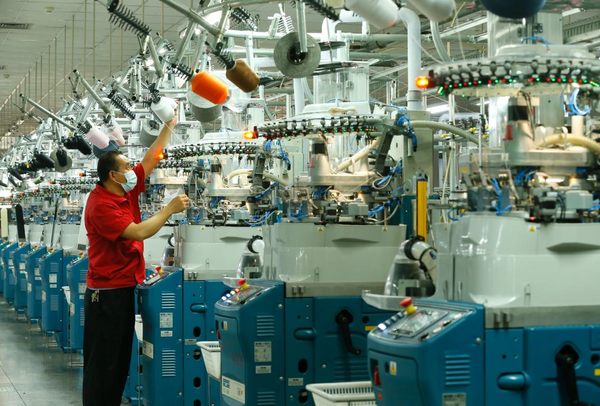By Xu Peiyu, People's Daily
Chinese commodities are becoming more and more popular with global buyers thanks to the prospering development of the overseas warehouse model.
Overseas warehouses are warehousing facilities established overseas that provide basic services for Chinese manufacturers, such as storage, transferring, sorting, packaging, in-situ processing and delivery. They also offer value-added services, helping Chinese manufacturers with order processing, customs affairs, refunding, financing and overseas distribution.
Cross-border e-commerce, a new channel for foreign trade, has achieved rapid progress in China over recent years. As an important part of the business model and a new type of foreign trade infrastructure, overseas warehouses are playing a constructive role in helping foreign trade enterprises lower costs, increase efficiency and smoothen the supply chain.

On Sept. 21, a consumer from the Kingdom of Bahrain received a capsule coffee machine and a milk frother. The two devices, manufactured by Chinese company HiBREW and sent from an overseas warehouse in Saudi Arabia, were delivered to the destination only two days after the online order was placed.
The Chinese company started using overseas warehouses in July, 2020. Now its products are stored in warehouses in 12 countries and regions, such as Saudi Arabia, Dubai, Russia, Spain and France. It has seen an 80 percent rise in order quantity thanks to the convenient logistics.
HiBREW is not the only example. So far, cross-border e-commerce platform AliExpress, in cooperation with Cainiao, a Chinese logistics company launched by e-commerce giant Alibaba, has established over 20 overseas warehouses in 11 countries and regions, which cover a total area of 860,000 square meters.
In its Europe market, AliExpress is now able to deliver products to consumers within two days. Besides, the company also offers consumers a Worry-Free 15-day return and exchange service. Since this year, the company has begun entering emerging markets such as Mexico and Israel.

According to data released by China's Ministry of Commerce (MOFCOM), China had over 2,000 overseas warehouses as of the end of the last year, which covered a total area of more than 16 million square meters.
"The overseas warehouse model is a new business form of China's foreign trade and an important infrastructure supporting cross-border e-commerce and other new forms of foreign trade in the future," said Li Mingtao, chief e-commerce expert with the China International Electronic Commerce Center under the MOFCOM, adding that the development of cross-border e-commerce is inseparable from the strong support of overseas warehouses.
A complete overseas warehouse system can further improve cross-border e-commerce enterprises' service capability, provide purchase better experience for overseas consumers, and significantly lower logistics and warehousing costs, thus improving the core competitiveness of these enterprises, the expert noted.
As China constantly enhances its support for overseas warehouses, both the number and functions of the overseas infrastructure are expanded.
Apart from basic storage services and value-added services, most of the overseas warehouses have established online information service platforms to synchronize information with e-commerce platforms. The function is able to manage small quantities of commodities that come in frequent batches to warehouses.

Overseas warehouses also contribute to alleviating the financing pressure of small- and medium-sized enterprises (SMEs). For instance, Zongteng Group, a global cross-border e-commerce infrastructure service provider based in China, has acted as a matchmaker between the funding and financing parties based on loads of information acquired when running its overseas warehouses. It helps cross-border e-commerce enterprises lower their cost in financing.
A batch of outstanding overseas warehouses are currently making active exploration in information construction, intelligent development, diversified services and localized operation, said Hong Yong, associate researcher with the Chinese Academy of International Trade and Economic Cooperation under the MOFCOM. The overseas warehouses offer services such as warehousing operation, digital marketing, one-stop customs clearance, supply chain finance and compliance consulting for cross-border e-commerce sellers, Hong added.
In the future, the overseas warehouse model will help more Chinese manufacturers, especially SMEs expand overseas markets, and bring more Chinese products to foreign consumers.
Li Xingqian, an official with the MOFCOM, noted that the ministry will encourage entities to join the construction of overseas warehouses and steadily advance its work on standard making.
In addition, the ministry will also support the digital development of overseas warehouses and improve the construction of intelligent overseas logistics platforms, and strengthen financial support for the construction of overseas warehouses by encouraging eligible financial organizations to launch targeted financing and credit insurance products and services.


